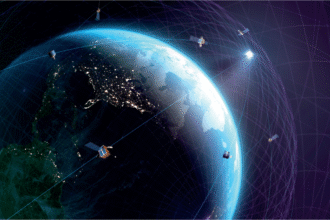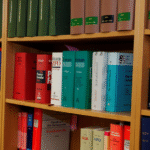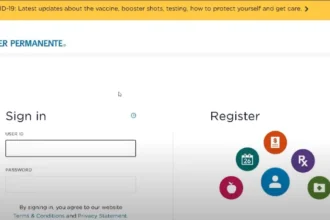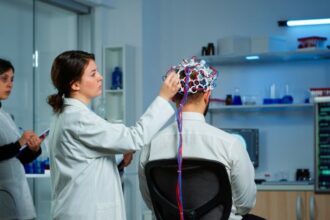The world of education has changed dramatically, with the vast majority of students across the globe already using AI tools. With artificial intelligence finding an increasing place in the classroom, there is now a real challenge for teachers who want to keep content authentic whilst using technology. The conversation around AI humanization shows an interesting picture of how teachers are reacting to tools in their profession.
The Trust Gap: Why Teachers Are Not Using AI
Teachers today are in unfamiliar territory. While the vast majority of students are using AI for academic purposes on a daily basis most teachers have never used AI with their classes. This creates a gap and can influence classroom dynamics if not dealt with.
There are real consequences to this. Teachers spend close to 10 hours a week on lesson prep and marking, tasks that AI could streamline. But if teachers are not provided with training or institutional support and policies and procedures to deal with AI, then many teachers feel they cannot maintain standards whilst using these tools.
Recent research has taken this a step further, finding that teachers cannot reliably differentiate between AI and human work, and even when they suspect AI are prone to incorrectly identify human work and miss AI work. This is a huge reason why many teachers feel they cannot adopt AI into their teaching.
Redefining Authenticity in the AI Age
The question of authenticity lies at the center of fears amongst teachers. Teachers are becoming increasingly aware that authentic assessment is no longer about the output but the process of getting there. So they are looking to reorient assessments with more process based learning that AI cannot do.
Teachers are now discovering that work that requires personal reflection, real world application, and critical analysis is human territory. I am a chemistry teacher, and I have used an AI assistant to produce an incorrect explanation for students and I ask them to point out why it is incorrect. This makes AI work an area of the curriculum that students can engage with, but it is not a shortcut to the answer. For teachers who want to keep authenticity whilst using AI, there are solutions such as GPTHumanizer which offer a middle ground. These solutions help ensure that AI-assisted content retains natural, human-like qualities without sacrificing efficiency or educational value.
Students vs. Teachers: Different Views on Academic Integrity
Students are living their own AI vs authenticity dance while navigating this new terrain. Almost half of the students in the study admitted to using AI in ways that violate school rules, but they did not consider what they had done to be wrong. This highlights a generational shift in how students see the role of academic integrity. Many would agree that using an AI to write something without giving credit to it is plagiarism. However, they seem to believe that how you use AI matters more than whether you use it at all.
Most students see the use of AI as a spectrum. While they would consider it unethical to use AI to write an entire essay, they see many other ways in which it can help them in their learning. This is what they and their teachers see as the reality of students using AI: to get their work done faster, to improve it, or to generate ideas. They are not trying to be disingenuous – they are trying to get through a system that is overloaded and often places grades over learning.
What Actually Works in the Times of AI and Authenticity
Teachers are actually developing ways to work with this reality in ways that give real learning experiences to students. The key is acknowledging that AI is a tool to help us be more creative, rather than a way of doing something for us.
Many teachers have found the traffic light approach works best, with students green for work they can use AI on, yellow for work where they can use AI but you need to get the green light for it, and red for work that needs to be fully human. The examples that many teachers gave were brainstorming ideas and checking the grammar of a piece of writing. But they considered a personal reflection or an original argument something that could not be done by an AI system. Assessments are designed in ways that are inherently difficult to complete using AI; performance tasks, oral exams, or projects that require real world application. And when teachers need to ensure that content that has been assisted with AI is still authentically human, there are other platforms available such as Humanize AI that can help.
Moving Forward: Keeping Education Human in an AI World
As educators continue to adapt to classrooms integrated with AI, it is clear that it should support, rather than replace, human connection. The best approach is to combine the efficiency of AI with the irreplaceable qualities of teachers – empathy, adaptability and the ability to inspire.
One way to successfully integrate the use of AI in education is to let it do what it does best – repetitive tasks. For instance, to grade multiple choice exams, or generate practice problems for exams, then teachers can then focus their energies on meaningful interactions in the classroom – helping guide a discussion, mentoring students through difficult issues and encouraging critical thinking, which no algorithm can replace.
The question is not whether AI belongs in education – it already does. The question is how it can be used in a way that supports authentic learning and interaction. In an evolving classroom, educators who embrace AI as a tool whilst keeping the human heart of teaching will foster learning environments where students develop both technological literacy and genuine understanding. Authenticity in education does not mean rejecting the use of AI, but rather using it in a thoughtful way to support what is most important – real learning, real growth, and real human connection.
Frequently Asked Questions
Can AI detection tools reliably identify AI-generated student work?
These tools are not reliable. Studies have shown that most AI-generated work goes undetected and markers incorrectly flag genuine student work. As well as this, most markers will use AI detection tools on student work with the intention of identifying AI-generated work. However, as most teachers are unable to reliably identify AI-generated work, this approach is ineffective.
What skills do teachers need to be able to effectively use AI in education?
Teachers need AI literacy that goes beyond simply being tech-savvy. They need to understand the tool (how it works) and the ethical implications (what it does) and the pedagogical applications (how to use it). As well as this, teachers need to be able to engage in professional learning to remain up to date with developments in AI.
Will AI replace teachers in the classroom?
No. Teachers will not be replaced by AI. However, their role will change. Teachers are needed to provide emotional intelligence, mentorship, authentic human connection and to inspire students. AI is a tool that does some of the work that a teacher would otherwise do, but only a teacher can do the other work.

















